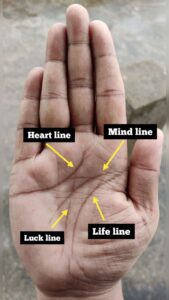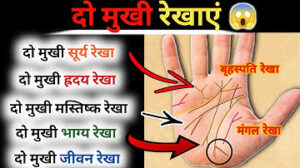The Fascinating World of Palmistry: Decoding the Language of Your Hands
In the realm of ancient mystical practices, palmistry stands out as a captivating art that has intrigued people for centuries. Also known as chiromancy, palmistry involves the study of the lines, shapes, and mounts on the palm to gain insights into an individual’s personality traits, potential life events, and even their destiny. While skeptics might dismiss it as mere superstition, many enthusiasts believe that the lines etched on our hands hold secrets waiting to be deciphered
.
The Basics of Palmistry
At its core, palmistry is the art of reading the hand’s features to reveal information about a person’s character and life experiences. Although interpretations may vary across different cultures and traditions, several fundamental aspects remain consistent.
1. Lines:
The lines on the palm are perhaps the most recognizable aspect of palmistry. The three major lines—the heart line, head line, and life line—hold significant importance. The heart line reflects matters of the heart, emotions, and relationships. The head line signifies thought processes and decision-making. The life line doesn’t necessarily predict the length of life but indicates the quality of life experiences.
2. Mounts:
These are raised areas of the palm located at the base of each finger. Each mount corresponds to a specific planet and represents various qualities. For example, the mount beneath the Jupiter finger relates to ambition and leadership, while the mount beneath the Venus finger represents sensuality and artistic inclinations.
3. Shapes:
The shape of the hand itself provides insight into an individual’s temperament. There are four primary hand shapes: Earth, Air, Water, and Fire. Earth hands are practical and grounded, Air hands are intellectual and communicative, Water hands are sensitive and intuitive, and Fire hands are energetic and enthusiastic.
Unlocking Personal Traits
Palmistry enthusiasts believe that the lines, shapes, and mounts on your hand can reveal a wealth of information about your personality traits. While palmistry is not a science and should be taken with a grain of curiosity, here are some common interpretations associated with certain features:
1. **Heart Line:** A long and curvy heart line is often associated with a deeply emotional and passionate nature. A short heart line might indicate a more rational and logical approach to emotions.
2. **Head Line:** A straight and clear head line indicates a practical thinker with a logical mindset. A wavy line suggests a creative and imaginative individual, while a sloping line might belong to someone who thinks with their heart rather than their head.
3. **Life Line:** Contrary to popular belief, the length of the life line does not predict longevity. However, a strong and deep life line might signify vitality and resilience in facing life’s challenges.
4. **Mounts:** Well-developed mounts could indicate a strong presence of the corresponding trait. For instance, a pronounced mount beneath the Mercury finger (linked to communication) could suggest excellent communication skills.
5. **Finger Lengths:** Comparing finger lengths can offer insights into an individual’s balance between logic and intuition. A longer index finger relative to the ring finger might suggest a person who values intellectual pursuits, while a longer ring finger might indicate a more emotionally attuned individual.
Exploring the Basics of Palmistry: How Can I Read My Own Palm?
Palmistry, also known as chiromancy, is an ancient art of interpreting the lines, shapes, and mounts on your palms to gain insight into your personality traits, life events, and potential future. It’s a captivating practice that has intrigued people for centuries, offering a glimpse into the mysterious world of self-discovery. While some consider palmistry a mere superstition, many enthusiasts believe that the lines etched on their palms hold hidden clues waiting to be deciphered.
Getting Started: Understanding the Basics:
Palmistry involves examining various aspects of your hands, including the lines, shapes of your fingers, and the mounts, which are elevated areas of the palm. Although the interpretations may vary across different cultures and traditions, let’s delve into some fundamental points to begin your exploration:
-
The Lines:
The lines on your palm are among the most significant elements in palmistry. The three primary lines—heart line, head line, and life line—play a crucial role in reading your palm. The heart line reflects emotions, relationships, and matters of the heart. The head line represents your thought processes and decision-making abilities. The life line, contrary to popular belief, does not predict your lifespan. Instead, it indicates your vitality and the major life events you might encounter.
-
Finger Shapes:
The shapes of your fingers also hold meaning. For instance, long fingers may suggest analytical thinking and introspection, while shorter fingers might indicate practicality and a hands-on approach. The size and shape of your thumb can reveal information about your willpower and determination.
-
Mounts:
The mounts are the raised areas at the base of each finger and on the palm’s center. These are associated with different planets and aspects of life. For example, the mount of Venus under your thumb is related to love, sensuality, and creativity. The mount of Jupiter beneath your index finger symbolizes ambition and leadership qualities.

Reading Your Own Palm: Step by Step:
While professional palmistry requires years of study, you can begin by examining your own palm in a simple and fun way:
Clean and Relax Your Hands:
Before reading your palm, ensure your hands are clean and relaxed. Find a quiet space where you can focus without distractions.
Identify the Major Lines:
Locate the three primary lines—heart line, head line, and life line. Gently observe their lengths, shapes, and intersections.
3. **Interpret the Heart Line:** The heart line represents your emotions and relationships. A deep and long line might indicate a passionate and sentimental nature, while a short and straight line could suggest a more logical and reserved approach.
4. **Analyze the Head Line:** This line reveals your thought patterns and decision-making abilities. A straight and well-defined line may signify practical thinking, whereas a wavy line could indicate creativity and imagination.
5. **Understand the Life Line:** Contrary to popular belief, the life line doesn’t predict your lifespan. Instead, it represents your vitality and major life events. A strong and clear line may indicate good health and vitality.
6. **Examine the Mounts:** Look for any raised areas on your palm. Identify the mounts and consider their associated meanings. For example, a well-developed mount of Mercury under your little finger might indicate strong communication skills.
7. **Consider Finger Shapes:** Observe the lengths and shapes of your fingers. Each finger’s characteristics provide insights into your personality traits.
8. **Reflect on Your Findings:** As you observe the various elements, reflect on how they resonate with your personality, experiences, and aspirations.
**Conclusion: Unlocking Self-Awareness through Palmistry:**
Palmistry offers a fascinating journey of self-discovery. While it’s important to remember that palmistry is not an exact science, exploring its basic principles can provide you with insights into your own character traits and potential life paths. As you embark on this journey, keep in mind that palmistry is an art that blends intuition and observation, helping you gain a deeper understanding of yourself and your unique journey in life.
